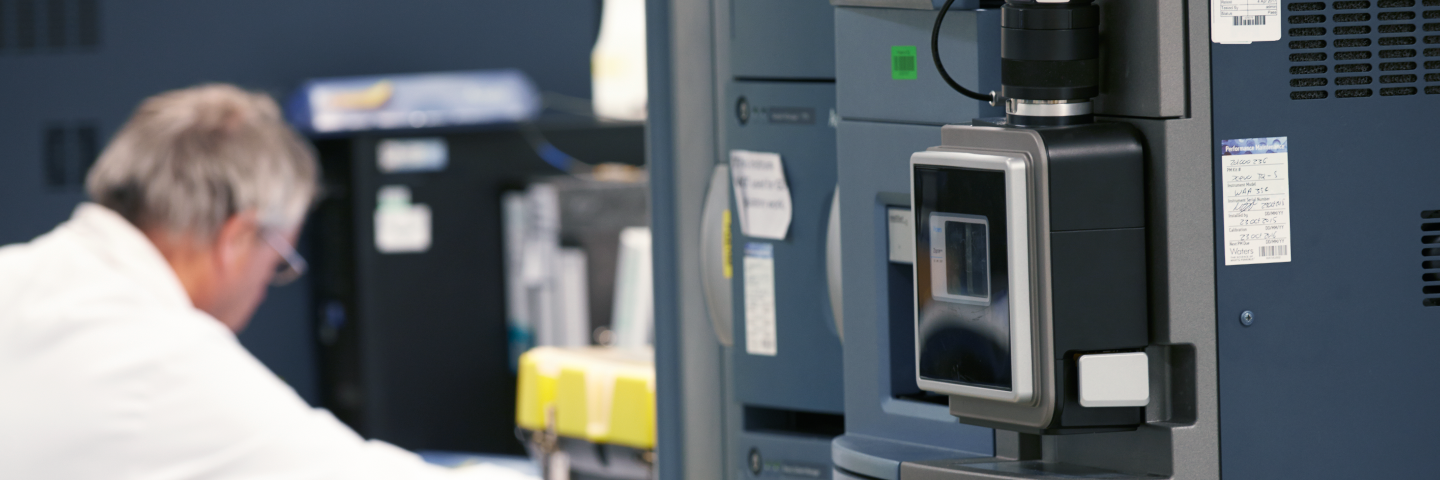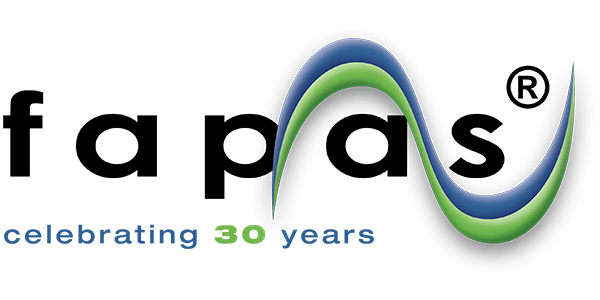
Visit our other sites
-
Fapas - Proficiency Testing
Globally recognised provider of proficiency tests, running over 400 tests annually across an extensive range of matrices and analytes
-
Great Crested Newts Testing
A single sample taken by an ecologist at any time during the newt breeding season can determine their presence or absence, saving you time and money
PFAS are a large group of synthetic organofluorine chemicals that have been widely used since the 1940s and are widely used across a range of industries because of their waterproofing, grease proofing, stain repellent and fire retardant properties.

What are PFAS and why should we be worried?
PFAS are part of a class of about 9,000 fluorinated compounds. Due to their structure and unique chemical properties, PFAS are widely used as they provide a non-stick barrier to fat and water. The compounds are widely used in takeaway food packaging, microwavable bags, kitchen utensils, and cookware. Due to their chemistry (strong carbon-fluorine bond) PFAS are very stable compounds and are classified as Persistent Organic Pollutants (POPs). They are also recognised as long range transboundary air pollutants. PFAS have been widely detected in the environment (due to their use as firefighting foams and escape from manufacture sites) and now in the food chain and in human blood. As PFAS bioaccumulate through the food chain it is generally foods of animal origin such as fish and meat that are found to contain the highest levels of these compounds. However, the soil that the crops are grown in, the water supplies used on the crops and potential nearby industries/production plants using PFAS products can influence PFAS contamination levels found in crops.
Human exposure to PFAS from the environment and through dietary sources is in the global media spotlight with various consumer and advocacy groups lobbying government bodies to introduce regulations to safeguard the population.
What’s the regulation around PFAS?
What are we doing?
Fera in its capacity as the UK National Reference Laboratory (NRL) for halogenated POPs has a validated method for the analysis of the EFSA priority PFAS in various food commodities. Our experts have developed PFAS testing for fish and shellfish, with tests also available for meat, dairy products, eggs, honey, fruits, and vegetables. Working in collaboration with policy makers, we are stressing the need for increased competence in PFAS analysis to support risk assessment studies and compliance monitoring for export into the EU (as a Third country) and due diligence testing for domestic supply to achieve the emerging stringent regulatory limits required to safeguard the consumer.
PFAS - The Forever Chemicals in the global food and feed chain
In response to the emerging regulatory framework, Fera Science Ltd. has developed a scalable multi PFAS LC-MS/MS method using isotope dilution following the EURL guidelines. Fera can support our clients with PFAS testing services for due diligence, supplier screening and surveillance monitoring purposes. As the Regulatory situation evolves, we are expanding the method to cover additional matrices and the target list of PFAS.
We are a socially responsible, expert scientific services business delivering world leading support to public and commercial sectors to address the most demanding UN Sustainable Development Goals for benefit of humankind and our planet.
The Thomson Suite: State-of-the-Art Mass Spectrometry at Fera
The equipment within the facility consists of very sensitive and selective instruments such as LC-MS/MS, IC-MS/MS and GC-MS/MS which are used for the determination of compounds including pesticides, veterinary medicines, natural toxins, processing contaminants, environmental contaminants and packaging migrants, from a wide range of sample types including food, feed, beverages, packaging materials and environmental matrices such as water and soil.
PFAS quantitative analysis is primarily conducted using Liquid Chromatography coupled with tandem mass spectrometry (LC-MS/MS) with ESI in negative polarity mode. Isotope dilution mass spectrometry using (using 13C labelled analogues) is the “gold standard” method for quantitation of PFASs in food and environmental samples.



